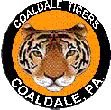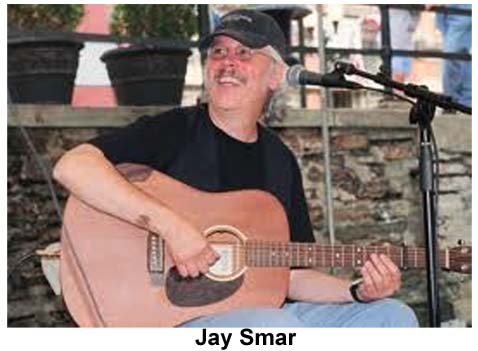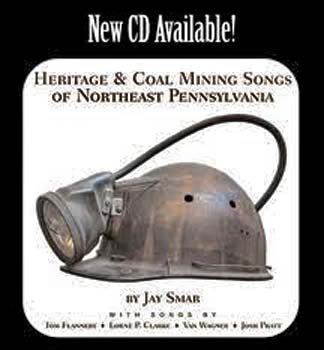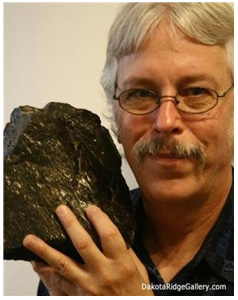Excerpt:

The audience sang along with Coaldale native and professional musician Jay Smarr as he opened the program with "There's Coal in Summit Hill": "There's coal in Summit Hill, there's coal in Summit Hill; come to Carbon County, there's work for all and plenty. ..."
Smarr told the crowd that his family history helped in writing the song. "My grandfather came to this country when he was 12 years old. He worked in the mines near Coaldale for 60 years, dying of black lung disease at 72."
Smarr researches his song material at local libraries, including Jim Thorpe's.
Full Article:
I'm a little collier lad
hardworking all the day,
from early morn 'til late at night
no time have I to play.
Down in the bowels of the earth,
where no bright sun rays shine,
You'll find me busy at my work
a white slave of the mine.
The lyrics of this ballad are displayed near a stark, black-and-white photograph of a breaker boy grinning through layers of coal dust. In 1901, about 6,400 boys under 14 worked in the anthracite coal mines in northeastern Pennsylvania.
The display, part of an exhibition of coal-mining history at the Eckley Miners Village Museum near Freeland, offers a glimpse of the day-to-day lives of a people whose existence was as gritty and hard as the coal they mined.
The Eckley Miners Village recently hosted a public history program, "Many a Tale Was Told In the Depths." The program centered on anthracite region folklore, featuring folk singers, talks on the oral history of Pennsylvania coal mining, and demonstrations of the music and dance of the region.
"This is the first time we've ever done a program specifically geared toward folklore," said Keith Parrish, museum educator. About 140 attended.
At the museum entrance, a photographic mural projects the grim faces of immigrant coal miners and their families, leading to displays of antique mining tools, clothing, household goods and appliances and other artifacts of austere patch-town life.
Among the displays is a small coffin. A sign reads: "Even if the coal miner survived the dangers of blasting, mine collapse, rock falls, floods and gas explosions, he only lived to die a slow death from black lung disease."
The audience sang along with Coaldale native and professional musician Jay Smarr as he opened the program with "There's Coal in Summit Hill": "There's coal in Summit Hill, there's coal in Summit Hill; come to Carbon County, there's work for all and plenty. ..."
Smarr told the crowd that his family history helped in writing the song. "My grandfather came to this country when he was 12 years old. He worked in the mines near Coaldale for 60 years, dying of black lung disease at 72."
Smarr researches his song material at local libraries, including Jim Thorpe's.
"I do a lot of programs at schools, and I always try to impress the kids about what went on a long time ago in the coal regions," he said. "I'm really fascinated by the area."
He said he wanted his audience at the museum to get the message that "coal-mining culture is a part of history -- and not to be forgotten."
The oral history of the coal regions -- tales passed down through generations -- paints a striking picture of life in the mines, according to Dr. Kenneth Thigpen, a Pennsylvania State University professor who spoke about "Collecting Oral History and Folklore in Pennsylvania."
Thigpen said that, over time, oral history becomes folklore. He told the audience about the works of author George Korson, a former newspaper reporter from Wilkes-Barre who collected and wrote about anthracite region folklore and song. The late Korson wrote several books on coal-mine culture, including a 1938 work, "Minstrels of the Mine Patch."
The program was sponsored by the Eckley Miners Village Associates, a group of supporters who raise funds and develop programs, tours and public events at the museum. About 20,000 people visit the museum each year.
John and Merrilee Levin are included in that number: They and their two young sons visit the museum about twice a year. "The boys love the museum, and I think they'll enjoy hearing the folk music today," said John Levin as he responded to a volley of questions from the brothers.
The Eckley village, standing alone amid strip-mining pits and black-silt ponds, was built as a company mining town to house immigrant coal miners in the early 1800s. Under the control of the mining company, the village had schools, churches and stores. About 21 people -- retired miners and their families -- still live in the village.
Paramount Pictures filmed parts of the movie "The Molly Maguires" at Eckley in 1968. Eckley was owned by a succession of coal-mining companies until about 1969, when it was purchased by a group of Hazleton area businesspeople and turned into a museum.
The village, turned over to the state in 1971, is administered by the Pennsylvania Historical and Museum Commission.
Source: http://articles.mcall.com/1992-03-16/news/2836861_1_eckley-miners-village-museum-coal-black-lung-disease


 Now, ten years later, the CD album, Heritage and Coal Mining Songs of Northeastern Pennsylvania, is being released as a compilation of ten songs featuring coal mining tunes by Smar, with additional songs by Clarke, Flannery, Pratt, and Wagner, and traditional coal mining songs from the research of George Korson.
Now, ten years later, the CD album, Heritage and Coal Mining Songs of Northeastern Pennsylvania, is being released as a compilation of ten songs featuring coal mining tunes by Smar, with additional songs by Clarke, Flannery, Pratt, and Wagner, and traditional coal mining songs from the research of George Korson. Orwigsburg. "When I was introduced to George Korson's book, Minstrels of the Mine Patch, I saw all these songs with names of towns that I grew up in," Smar said. "Songs and poetry—I thought it was fantastic."
Orwigsburg. "When I was introduced to George Korson's book, Minstrels of the Mine Patch, I saw all these songs with names of towns that I grew up in," Smar said. "Songs and poetry—I thought it was fantastic." Carl Trollinger and Ken Gehret. At 23, Smar quit his day job as a tree surgeon and joined a national touring band, The Classics Four. He performs on guitar, claw-hammer banjo, harmonica and fiddle. He sings and flat-foots, a form of clog-dancing. Smar is a full time musician and has dedicated his life to his loves — music, coal mining and people." Source:
Carl Trollinger and Ken Gehret. At 23, Smar quit his day job as a tree surgeon and joined a national touring band, The Classics Four. He performs on guitar, claw-hammer banjo, harmonica and fiddle. He sings and flat-foots, a form of clog-dancing. Smar is a full time musician and has dedicated his life to his loves — music, coal mining and people." Source: 